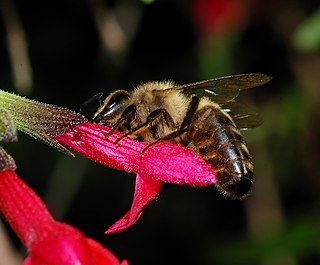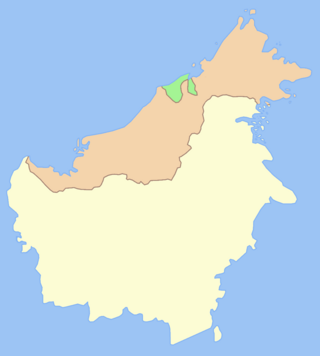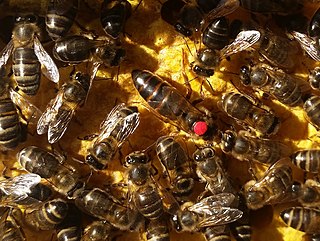Within biological taxonomy, a honey bee race would be an informal rank in the taxonomic hierarchy, below the level of subspecies. It has been used as a higher rank than strain, with several strains making up one race. Therefore, a strain is a lower-level taxonomic rank used at the intraspecific level within a race of a subspecies. Strains are often seen as inherently artificial concepts, more usually within biology as characterized by a specific intent for genetic isolation, however, within beekeeping circles, strain is more likely to be used to describe very minor differences throughout the same subspecies, such as the color ranges of A. m. carnica from brown to grey. Within A. m. ligustica there are two races, the darker leather brown northern Italian bee from the Ligurian Alps region which was discovered to be resistant to acarine in the 1900s, while the other Italian bee race, from regions near Bologna and further south, was highly susceptible to acarine and within this race there are two color strains, the traditional Italian yellow and a rarer all-golden color.

The European dark bee is a subspecies of the western honey bee, evolving in central Asia, with a proposed origin of the Tien Shan Mountains and later migrating into eastern and then northern Europe after the last ice age from 9,000BC onwards. Its original range included the southern Urals in Russia and stretched through northern Europe and down to the Pyrenees. They are one of the two members of the 'M' lineage of Apis mellifera, the other being in western China. Traditionally they were called the Black German Bee, although they are now considered endangered in Germany. However today they are more likely to be called after the geographic / political region in which they live such as the British Black Bee, the Native Irish Honey Bee, the Cornish Black Bee and the Nordic Brown Bee, even though they are all the same subspecies, with the word "native" often inserted by local beekeepers, even in places where the bee is an introduced foreign species. It was domesticated in Europe and hives were brought to North America in the colonial era in 1622 where they were referred to as the English Fly by the Native Americans.

The Caucasian honey bee is a subspecies of the western honey bee.

Apis cerana nuluensis is a subspecies of honey bee described in 1996 by Tingek, Koeniger & Koeniger. The geographic distribution of the subspecies is the southeastern Asian island of Borneo, politically divided between Indonesia, Malaysia, and Brunei.

Apis laboriosa or Himalayan giant honey bee, is the world's largest honey bee; single adults can measure up to 3.0 cm (1.2 in) in length. Before 1980, Apis laboriosa was considered to be a subspecies of the widespread Apis dorsata, the giant honey bee, but in 1980 and for almost 20 years thereafter it was elevated to the rank of a separate species. It was classified once again as a subspecies of Apis dorsata by Michael S. Engel in 1999, but was confirmed as a full species in 2020 on the basis of co-occurrence with Apis dorsata at many sites with no sign of interbreeding. It is highly adapted to its highland habitat in behavior.

Apis dorsata, the rock bee or giant honey bee, is a honey bee of South and Southeast Asia. They are typically around 17–20 mm (0.7–0.8 in) long and nests are mainly built in exposed places far off the ground, like on tree limbs, under cliff overhangs, and under buildings. These social bees are known for their aggressive defense strategies and vicious behavior when disturbed. Though not domesticated, indigenous peoples have traditionally used this species as a source of honey and beeswax, a practice known as honey hunting.
The Maltese honey bee, Apis mellifera ruttneri, is a subspecies of the western honey bee, endemic to the Maltese islands which are situated in the Mediterranean Sea.

The Macedonian bee is a subspecies of the Western honey bee. It is found mainly in Albania, Bulgaria, North Macedonia, Northern Greece and other places in the Balkans as well. Originally this subspecies was described based on morphological characteristics by Friedrich Ruttner, as were the adami, cecropia and cypria subspecies.
Apis mellifera iberiensis, or the Spanish bee, is a western honey bee subspecies native to the Iberian Peninsula. It is also found on the Balearic Islands.

Apis mellifera intermissa is an African subspecies of the western honey bee.
The Apis mellifera jemenitica is a subspecies of the western honey bee. It is native to the southern Arabian Peninsula, south of the Sahara, Sudan and Somalia. Based on morphological studies by Friedrich Ruttner, it is classified as a tropical African bee group.
Apis mellifera artemisia is the Russian steppe honey bee, first identified in 1999 near Kyiv, Ukraine, by only one specimen, but by 2011 its taxonomic status had been called into question, although to date no DNA analysis has been conducted: At the same time the taxonomic status of the Apis mellifera ruttneri on Malta was also called into question, however in 2017 it was confirmed that Apis mellifera ruttneri was a new and separate subspecies.
Apis mellifera sossimai extending from the west of Ukraine centrally and southwards towards the Caucasus mountains. However in 2011 research from Russia conducted mtDNA analysis showing that the A. m. sossimai was not a separate subspecies, but only an ecotype of the Apis mellifera macedonica subspecies.
Apis mellifera taurica along the north central shores of the Black Sea, in the Crimea. However in 2011 research from Russia questioned the taxonomic status of A. m. taurica citing mtDNA analysis to the north and west of Crimea, which had shown that those regions did not have distinct subspecies, but that their honey bees were at the most ecotypes of previously known subspecies.
Apis mellifera monticola is known by the common name of the East African mountain honey bee. In 2017 its complete mitochondrial genome was sequenced, confirming that it belonged to the A Lineage of honey bees and concluding that "A phylogenetic tree showed that A. m. monticola clusters with other African subspecies".
Apis mellifera unicolor is known by the common name of the Madagascar honey bee, sometimes also called the Malagasy honey bee,, it is endemic to the island of Madagascar.

Apis mellifera syriaca is known by the common name of the Syrian honey bee, sometimes also called the Palestine honey bee.
Apis mellifera remipes is known by the common name of the Armenian honey bee and is reported to occur in the region of Armenia, however numerous names have been assigned to honey bees within this area leading to considerable confusion as to the correct name which should be used. There has also been doubts raised as to whether the A. m. remipes has been misidentified, and is not actually the A. m. anatoliaca to the west.
Apis mellifera meda is known by the common names of the Median honey bee or the Iranian honey bee. Its range covers the non desert areas of most of Iran and Iraq, but also into southeastern Turkey, across northern Syria as far as the coast of the Mediterranean. Colonies have been observed in the Azarbaijan Iranian highlands at elevations up to 3000m. Initially based on morphometric evaluation, but then later confirmed with DNA analysis, they belong to the O Lineage of Apis mellifera.







